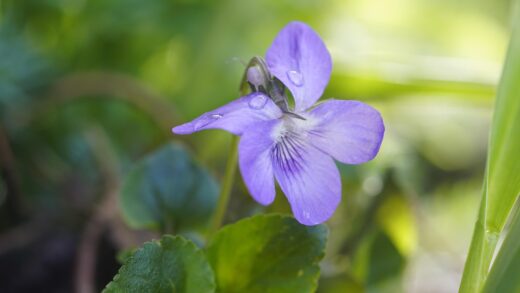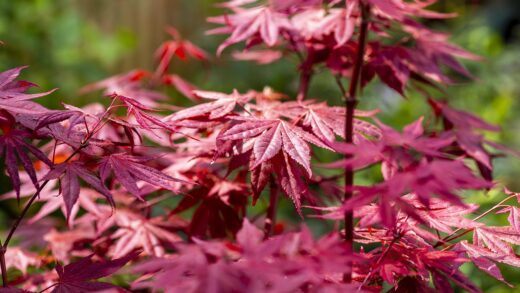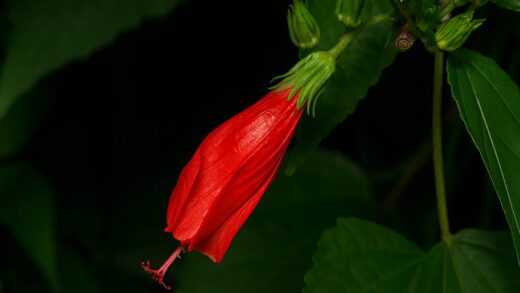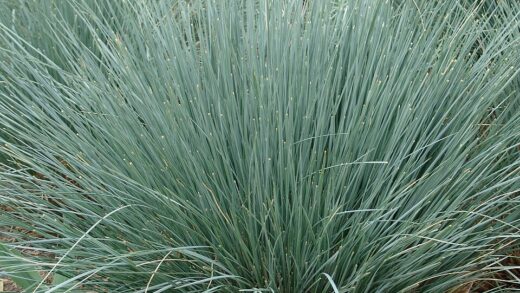Successfully establishing bacopa in the garden begins with proper planting techniques, which set the foundation for a season of vigorous growth and prolific flowering. Whether starting with young plants from a nursery or propagating your own, the initial steps taken are crucial for the plant’s long-term health. This involves selecting an appropriate location, preparing the soil meticulously, and handling the delicate root system with care. Proper planting ensures the bacopa can quickly acclimate to its new environment, develop a strong root system, and begin its characteristic trailing growth. Understanding these fundamentals is the first step toward cultivating a stunning display of cascading blooms.
Propagation offers a rewarding and cost-effective way to increase your stock of bacopa plants. The most common and reliable method is through stem cuttings, a simple process that takes advantage of the plant’s natural ability to root from its nodes. This technique allows gardeners to create new plants that are genetically identical to the parent, ensuring the same desirable flower colour and growth habit. It is an excellent way to produce more plants for larger displays, share with fellow gardeners, or create backups in case the original plant does not survive the winter.
The timing of both planting and propagation is a key factor in achieving success. Young bacopa plants should only be planted outdoors after all danger of frost has passed in the spring, as they are highly sensitive to cold temperatures. Similarly, the best time to take cuttings for propagation is from late spring to mid-summer when the parent plant is in a state of active, healthy growth. This ensures that the cuttings have sufficient energy stored to develop new roots and shoots. Planning these activities according to the seasons will greatly increase the chances of success.
This article will delve into the specific details of both planting nursery-grown bacopa and propagating new plants from stem cuttings. It will cover everything from soil preparation and spacing to the step-by-step process of taking, rooting, and caring for new cuttings. By following these professional guidelines, you can confidently establish and multiply your bacopa plants, ensuring a continuous and expanding display of their charming flowers in your garden year after year.
Selecting and preparing the planting site
The choice of planting site is a critical decision that will significantly impact the performance of your bacopa. These plants thrive with a combination of sun and partial shade. An ideal location would be one that receives gentle morning sun for at least four to six hours, followed by dappled shade or protection from the intense, hot afternoon sun. This exposure provides enough light for robust flower production while preventing the foliage from scorching and the soil from drying out too quickly. In cooler, more northern climates, bacopa can often tolerate full sun all day without issue.
More articles on this topic
Once the location is chosen, preparing the soil is the next essential step. Bacopa demands a growing medium that is both fertile and exceptionally well-draining. For container planting, which is the most common method for growing bacopa, a high-quality, all-purpose potting mix is the best choice. To improve its drainage capacity, consider amending the mix with one part perlite or coarse sand to three parts potting soil. This ensures that while the soil retains adequate moisture, any excess water can drain away freely, protecting the sensitive roots from rot.
If planting bacopa directly into a garden bed as a flowering ground cover, soil preparation is equally important. It is necessary to amend heavy clay soils or sandy soils to create a suitable texture and nutrient content. Work a generous amount of organic matter, such as compost, well-rotted manure, or peat moss, into the top 15-20 centimetres of the soil. This will improve the structure of clay soils, enhancing drainage, while also increasing the water and nutrient-holding capacity of sandy soils, creating a rich, loamy environment where bacopa can thrive.
Finally, consider the mature size and trailing habit of the plant when preparing the site. Bacopa stems can trail for 60 centimetres or more, so ensure there is adequate space for them to spill over the edge of a container, hanging basket, or retaining wall. When planting in a bed, space individual plants about 25-30 centimetres apart to allow them to form a dense mat of foliage and flowers without becoming overcrowded. Proper spacing promotes good air circulation, which is vital for preventing fungal diseases and allowing each plant to reach its full potential.
The process of planting young bacopa
When you are ready to plant your nursery-grown bacopa, the process should be handled with care to minimize stress on the young plant. Begin by watering the plant in its nursery pot about an hour before you plan to transplant it. This ensures the root ball is well-hydrated and helps it slide out of the container more easily, reducing the risk of root damage. Prepare the new container or garden bed by filling it with the prepared soil mix, leaving enough space to accommodate the plant’s root ball.
More articles on this topic
To remove the bacopa from its original pot, gently tip the container sideways and tap the bottom and sides to loosen the soil. Support the base of the plant with one hand and carefully slide it out, avoiding pulling on the delicate stems. Once removed, inspect the root ball. If the roots are tightly coiled and circling the bottom of the pot, a condition known as being “root-bound,” it is important to gently tease them apart with your fingers. This encourages the roots to grow outwards into the new soil rather than continuing to circle in on themselves.
Create a planting hole in the new soil that is roughly the same depth and slightly wider than the plant’s root ball. Place the plant in the hole, ensuring that the top of the root ball is level with the surrounding soil surface. Planting it too deep can lead to stem rot, while planting it too high can cause the roots to dry out. Once the plant is positioned correctly, backfill the hole with soil, gently firming it down around the root ball to eliminate any large air pockets.
After the bacopa is planted, the final and most crucial step is to water it thoroughly. This initial watering is vital as it helps to settle the soil around the roots, ensuring good contact and removing any remaining air pockets. It also provides the plant with the moisture it needs to recover from the stress of transplanting and begin establishing itself in its new home. Continue to keep the soil consistently moist, but not soggy, for the first few weeks as the plant develops its new root system.
Propagating bacopa from stem cuttings
Propagating bacopa from stem cuttings is a surprisingly simple and effective method for creating new plants. The best time to take cuttings is during the plant’s active growing season, from late spring through mid-summer. Look for healthy, vigorous stems that are free from any signs of disease, pests, or flowers. It is best to take cuttings in the morning when the parent plant is fully hydrated, as this improves their chances of rooting successfully. Cuttings taken from vegetative (non-flowering) shoots tend to root more reliably than those with flowers.
Using a clean, sharp knife or a pair of sterile pruning shears, take cuttings that are approximately 10-15 centimetres long. Make the cut just below a leaf node, which is the point on the stem where a leaf or branch emerges. The area around the node contains a high concentration of hormones that encourage root development. Once you have your cutting, carefully remove the leaves from the lower half of the stem, ensuring that at least two or three sets of leaves remain at the top. This is important because any leaves left below the soil level would rot, potentially causing the entire cutting to fail.
While not strictly necessary, dipping the cut end of the stem into a rooting hormone powder can significantly increase the success rate and speed up the rooting process. Tap off any excess powder before planting. Prepare a small pot or tray filled with a sterile, lightweight rooting medium, such as a mix of peat moss and perlite, or vermiculite. Moisten the medium thoroughly before inserting the cuttings. Use a pencil or a dibber to make a small hole for each cutting, then insert the prepared stem into the hole, ensuring the stripped nodes are below the surface. Gently firm the medium around the stem to hold it in place.
To create a humid environment conducive to rooting, cover the pot with a clear plastic bag or a plastic dome, ensuring it does not touch the leaves. Place the cuttings in a warm location with bright, indirect light. Avoid direct sunlight, as this can scorch the delicate cuttings. Check the medium regularly to ensure it remains moist but not waterlogged. Roots should begin to form within two to four weeks. You can check for rooting by giving a cutting a very gentle tug; if you feel resistance, it means roots have developed. Once the cuttings are well-rooted, they can be transplanted into their own individual pots.
Caring for newly rooted cuttings
Once your bacopa cuttings have successfully developed a healthy root system, they require careful attention to transition into strong, independent plants. After confirming that roots have formed, the first step is to gradually acclimate the cuttings to a lower humidity environment. If you have been using a plastic bag or dome to maintain high humidity, begin by removing it for a few hours each day, progressively increasing the duration over the course of a week. This process, known as “hardening off,” prevents the tender new plants from experiencing shock due to a sudden change in their environment.
After the cuttings have been hardened off, they are ready to be transplanted into larger, individual pots. Choose small pots, around 7-10 centimetres in diameter, with good drainage holes. Fill them with a high-quality, well-draining potting mix. Carefully remove each rooted cutting from the propagation tray, taking care to disturb the new root ball as little as possible. Plant each cutting into its own pot at the same depth it was growing previously. Water them gently but thoroughly after transplanting to settle the soil and provide necessary moisture.
The newly potted plants should be placed in a location that receives bright, indirect light. Direct sun can be too intense for these young plants and may cause them to wilt or become scorched. As they begin to show signs of new growth, you can start a very gentle fertilization regimen. Use a balanced, water-soluble fertilizer diluted to a quarter of the recommended strength, applying it about once every two to three weeks. This provides the necessary nutrients for continued development without overwhelming the delicate new root system.
To encourage a bushy, well-branched plant, it is important to pinch back the tips of the new growth. Once the main stem has developed a few sets of leaves, use your fingertips or a pair of small scissors to snip off the very top growing point. This action stimulates the plant to produce side shoots, resulting in a much fuller and more compact plant. Continue this pinching process as the side shoots grow, which will help to create the dense, cascading habit that makes bacopa so attractive in containers and hanging baskets.
📷: Deavmi, CC BY-SA 3.0, via Wikimedia Commons


















